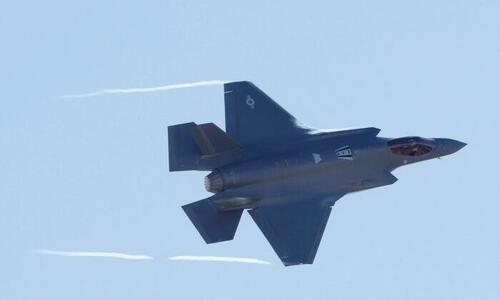A September 2023 Government Accountability Office (GAO) report on the F-35 revealed some shocking statistics on just how unready hundreds of billions of dollars worth of F-35s are to provide actual combat power. In fact, the report indicated that only 15 to 30 percent of F-35s may be capable of combat.
But if you were to read a typical article in the media, you might believe that, on average, some 55 percent of F-35s are combat-capable. However, you would be wrong. You see, when the average person sees a report declaring that 55 percent of F-35 combat aircraft are “mission capable,” they assume mission capable equals combat capable. But in doing so, they are being deceived.
The deception comes out of how the F-35 program office and the whole of the Department of Defense define “mission capable.” It turns out that the DoD definition of “mission capable” does not mean combat capable. What it means is that an aircraft can fly and perform at least one mission. So, a plane designated as mission capable might be capable of doing some type of combat, but it might not. Instead, the mission it might be capable of executing could be testing or training, or some other mission that does not involve combat. And even if it is considered capable of testing or training, it might not be capable of doing the full gamut of testing or training you would expect from a fully functional aircraft. Likewise, it could still be classified as mission capable even if it is only capable of executing a portion of the combat-type missions it is supposed to be able to perform.
Hence, within the environs of the military–industrial–congressional complex, “mission capable” is a highly ambiguous term that allows for a whole lot of gaming of accountability metrics. And it tells us very little. Still, it is worth noting that at a 55 percent mission capable rate, the F-35 fleet is well below program targets of 90 percent for the F-35A (Air Force) and 85 percent for the fighter’s F-35B (Marine Corps) and F-35C (Navy) variants. In other words, the F-35 fleet as a whole is nowhere near meeting its mission capability goal of being able to do anything at all.
However, there is another metric that is more useful: “full mission capable.” It turns out that “full mission capable” F-35s are supposed to be able to perform all the missions for which they were contracted, including combat-oriented missions, surveillance, training, testing, show of force, etcetera. This metric is not often publicized, but in the case of the F-35, the watchdog side of the GAO actually did a detailed report of the problems and issues with the F-35 that included how the F-35 fleet looked from the “full mission capable” perspective.
Even for someone who is an F-35 realist, the results are shocking. Not only is the F-35 fleet’s full mission capable rate in the neighborhood of 30 percent (see table on page 96 of the report), the full mission capable rate of the Marine Corps’ F-35B was a miserable 15.5 percent in March 2023. More current full mission capable rates have not been published, but given the program’s ongoing problems and issues, including unreliable engines that are now under-specced due to feature creep, it is highly unlikely the situation has improved in the last year.
And then there is the fact that being fully mission capable is no indicator of how well the plane executes its missions. For example, the F-35 could be designated as mission capable for conducting close air support missions despite the fact the F-35 is the very antithesis of what a close air support plane should be and is not capable of executing genuine close air support.
But given the F-35’s unreliability, talking about full mission capability rates of anything approaching even 50 percent is a pipe dream. And it cannot be overemphasized that the F-35/Joint Strike Fighter has been in development since 1994, costing billions of dollars.
This brings us back to the question of just how many of the over 600 F-35s delivered to the U.S. military can provide significant, non-trivial combat ability. The answer is we really don’t know. But if we combine the F-35’s fragility with its very low full mission-capable and sortie generation rates, it probably isn’t many. Especially, when you think of how many decades and billions of dollars we have dumped into it.
Nevertheless, we will continue to dump billions of dollars into the F-35 program that is already “more than a decade delayed and $183 billion over its original plans” as long as the incestuous relationship between defense contractors, the military, and Congress is permitted to dominate defense procurement.

